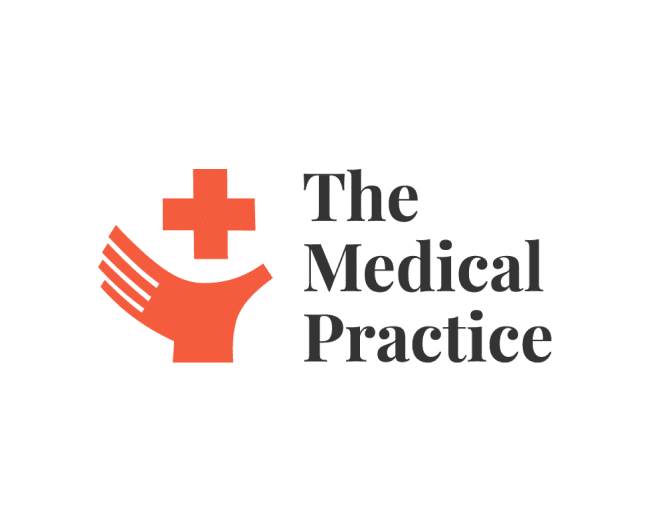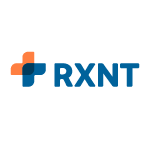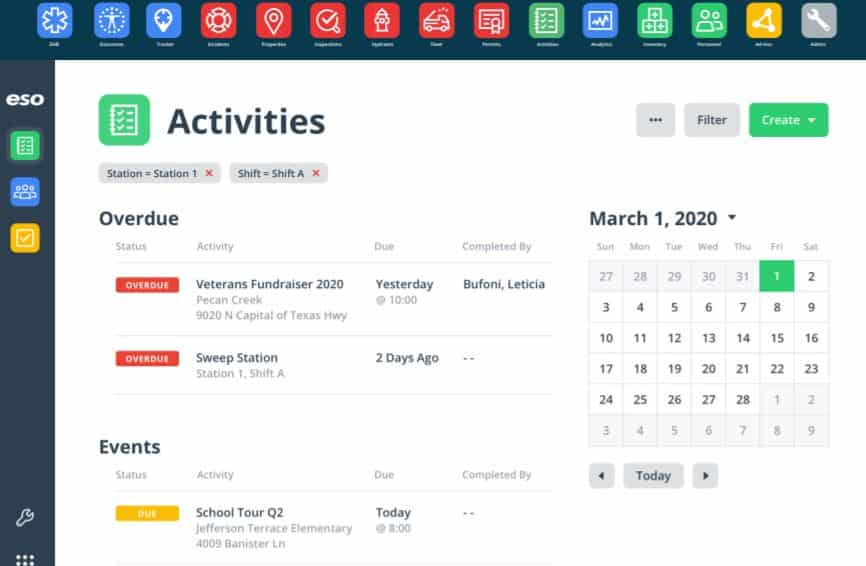10 Best Emergency Medical Services Software Shortlist
Here's my pick of the 10 best software from the 18 tools reviewed.
Our one-on-one guidance will help you find the perfect fit.
As an expert in the field of Emergency Medical Services (EMS), I have witnessed firsthand the immense challenges faced by EMS providers when it comes to delivering prompt and effective healthcare during emergencies. The critical nature of these situations demands seamless coordination, accurate information exchange, and efficient resource management to save lives and provide optimal care.
Emergency Medical Services (EMS) software is a specialized, web-based platform, designed to assist EMS agencies, fire departments, and law enforcement with a broad range of tasks including timekeeping, vehicle management, and patient records management. As a medical professional who has navigated these challenges, I believe exploring these software platforms will greatly enhance your efficiency and regulatory compliance. Be ready to pick the best choices in EMS software in the market today.
Why Trust Our Software Reviews
We’ve been testing and reviewing medical practice software since 2023. As medical practice technology researchers ourselves, we know how critical and difficult it is to make the right decision when selecting software. We invest in deep research to help our audience make better software purchasing decisions.
We’ve tested more than 2,000 tools for different medical practice use cases and written over 1,000 comprehensive software reviews. Learn how we stay transparent & check out our software review methodology.
Best Emergency Medical Services Software Summary
This comparison chart summarizes pricing details for my top emergency medical services software selections to help you find the best one for your budget and business needs.
| Tool | Best For | Trial Info | Price | ||
|---|---|---|---|---|---|
| 1 | Best for rapid hospital alerting to speed up response time | Not available | Pricing upon request. | Website | |
| 2 | Best for providing robust, real-time electronic health records for EMS | Not available | Pricing upon request. | Website | |
| 3 | Best for optimizing emergency services through all-in-one operations management | Not available | Pricing upon request. | Website | |
| 4 | Best for analytics and predictive modeling in emergency care | Not available | Pricing upon request. | Website | |
| 5 | Best for efficient physician scheduling and workflow management | Not available | From $40/user/month | Website | |
| 6 | Best for real-time team communication during emergencies | Not available | Pricing upon request. | Website | |
| 7 | Best for streamlining emergency department workflow and processes | Not available | Website | ||
| 8 | Best for ensuring patient safety with incident reporting and risk management | Not available | Pricing upon request. | Website | |
| 9 | Best for managing resources and compliance in public safety operations | Not available | Pricing upon request. | Website | |
| 10 | Best for data-driven EMS management and reporting | Not available | Pricing upon request. | Website |
Best Emergency Medical Services Software Reviews
ESO's software provides a unique approach to emergency medical services by focusing on rapid hospital alerting. The tool is designed to hasten the response time during emergencies, aligning perfectly with its purpose of enhancing communication and coordination between first responders and hospitals.
Why I Picked ESO: I picked ESO due to its primary focus on speeding up response time, which I think is a critical aspect of emergency services. This dedication sets it apart from other EMS software. In my judgment, ESO is 'Best for' rapid hospital alerting, which can make all the difference during an emergency situation.
Standout Features & Integrations:
ESO's primary feature, the rapid hospital alerting system, is instrumental in speeding up emergency response times. It integrates smoothly with a variety of hospital and emergency services systems, enhancing communication and data exchange among different entities in the healthcare landscape.
Pros and cons
Pros:
- Enhances communication between first responders and hospitals
- Smooth integration with hospital and EMS systems
- Special focus on rapid response time
Cons:
- Potential learning curve for staff not used to digital alerting systems
- Specific focus might limit broad functionality
- Lack of transparent pricing
ESO EHR is a sophisticated platform designed to generate robust, real-time electronic health records (EHRs) specifically for emergency medical services (EMS). In direct alignment with its core functionality, ESO EHR excels in creating comprehensive EHRs, which proves to be essential for streamlining EMS operations.
Why I Picked ESO EHR: Through a meticulous selection process, ESO EHR stood out to me due to its specific focus on providing real-time EHRs for EMS. This focus differentiates it from many other tools. In my opinion, ESO EHR is 'Best for' robust and real-time EHRs in an EMS context, given the critical role such records play in facilitating emergency care.
Standout Features & Integrations:
ESO EHR is equipped with a multitude of features that assist in the efficient generation and management of EHRs. Furthermore, it offers seamless integrations with various healthcare and emergency management systems, making it a central part of the information management system in EMS settings.
Pros and cons
Pros:
- Integrates well with other healthcare and emergency management systems
- Robust feature set for managing EHRs
- Provides real-time EHRs for EMS
Cons:
- The interface could be complex for new users
- Might require some training to fully utilize the system
- No transparent pricing information available
Best for optimizing emergency services through all-in-one operations management
Traumasoft is an all-in-one EMS operations management tool aimed at streamlining and optimizing emergency services. It provides a comprehensive suite of features that cater to various aspects of EMS management.
Why I Picked Traumasoft: In my selection process, Traumasoft caught my attention due to its all-in-one operations management capabilities. Its comprehensive suite of tools, encompassing everything from employee scheduling to fleet management, makes it stand out from other EMS software.
I determined Traumasoft to be 'best for' optimizing emergency services as it delivers a holistic solution for streamlining EMS operations.
Standout Features & Integrations:
Traumasoft's standout features encompass scheduling software, ePCR, fleet management, billing, and telemedicine, among others. Its compatibility with other software tools adds to its appeal, enabling integrations with CAD systems, HR tools, and accounting software to ensure comprehensive management.
Pros and cons
Pros:
- Integrates well with CAD systems, HR tools, and accounting software
- Broad range of features from employee scheduling to fleet management
- Comprehensive, all-in-one solution
Cons:
- Some users might prefer a more specialized tool for specific operations
- The all-in-one approach might be overwhelming for some users
- Absence of transparent pricing on the website
ESO EMS Software is a dedicated solution aimed at empowering emergency services with the power of data. By focusing on advanced analytics and predictive modeling, it brings a data-driven approach to emergency care, making it the best for this specific purpose.
Why I Picked ESO EMS Software: I chose ESO EMS Software because of its unique commitment to data-driven solutions in the field of emergency care. The fact that it focuses on analytics and predictive modeling sets it apart from other EMS tools. Its capabilities allow for better forecasting and informed decision-making in emergency care, validating it as the 'Best for' predictive modeling and analytics.
Standout Features & Integrations:
ESO EMS Software comes packed with advanced analytics features, including real-time dashboards, report builders, and predictive modeling capabilities. These tools can help to anticipate future scenarios and better prepare for emergency events. Integration-wise, it seamlessly links with other ESO suite products, enhancing overall EMS operations through interconnected modules.
Pros and cons
Pros:
- Seamless integration with other ESO suite products
- Real-time dashboards and report builders for in-depth insights
- Advanced analytics and predictive modeling capabilities
Cons:
- Requires a learning curve to fully exploit its analytics potential
- May be over-complex for smaller EMS teams
- Pricing information is not readily available
Petal Health is a platform designed to streamline scheduling and workflow for physicians. Its system enhances operational efficiency, simplifying task management, and patient messaging. Given these functions, it clearly stands out as an efficient tool for physician scheduling and workflow management.
Why I Picked Petal Health: I selected Petal Health because it concentrates on one of the most critical areas of healthcare management - physician scheduling and workflow. This focus, combined with robust functionality, sets it apart from many other tools. In my judgment, the platform’s capacity for simplifying complex scheduling processes and streamlining workflows makes it the 'Best for...' efficient physician scheduling and workflow management.
Standout Features & Integrations:
Petal Health's prominent features include intuitive physician scheduling, automated workflow management, and patient messaging tools. It also offers integration capabilities with a wide variety of existing electronic health records management systems, making it a versatile tool that can fit into any healthcare environment.
Pros and cons
Pros:
- Streamlines patient communication
- Integrates with existing electronic health record systems
- Focused on improving physician scheduling and workflows
Cons:
- User interface may require some learning curve for non-technical staff
- May not cover all aspects of healthcare management
- Pricing is not transparent
Pulsara is a dynamic communication platform designed to streamline real-time communication among emergency response teams. Its primary function is to facilitate rapid, coordinated responses during emergency situations.
Why I Picked Pulsara: In my quest to select top-notch tools for efficient emergency management, Pulsara stood out due to its real-time communication capabilities. It's unique in how it facilitates seamless, instant team collaboration during critical incidents, which is why I determined it to be the best for this use case.
Its effectiveness in fostering communication during emergencies is unparalleled, justifying its position on my list.
Standout Features & Integrations:
Pulsara's platform stands out with features like instant team activation, real-time patient status updates and notifications, and audio-visual communication capabilities. Moreover, it integrates well with existing EMS technologies, including EHRs and CAD systems, providing a unified communication interface.
Pros and cons
Pros:
- Integration with existing EMS technologies for a unified communication interface
- Real-time patient status updates keep all team members informed
- Instant team activation enhances response times
Cons:
- Some users may find the interface less user-friendly compared to other platforms
- Might require training to fully understand the platform
- Pricing is not transparently listed
MEDHOST offers specialized tools aimed at improving efficiency in emergency departments. Their software suite is designed to streamline workflow and optimize processes, ensuring patient care is timely and effective.
Why I Picked MEDHOST: I chose MEDHOST for this list because of its focus on the specific needs of emergency departments. The software offers a targeted solution to enhance workflow and processes, setting it apart from more generalized EMS tools.
In my opinion, MEDHOST is 'Best for' streamlining emergency department workflow and processes, providing tools that cater precisely to these needs.
Standout Features & Integrations:
MEDHOST's features stand out for their specialized approach, with tools like patient tracking, order entry, clinical documentation, and more. It also integrates well with existing hospital systems to allow for a seamless exchange of patient data and other critical information.
Pros and cons
Pros:
- Good integration with existing hospital systems
- Range of specialized features
- Tailored for emergency department workflows
Cons:
- Learning curve due to the specific nature of the software
- Might be too specialized for some EMS services
- Pricing is not transparent
Omnigo is a robust software solution focused on incident reporting and risk management in healthcare settings. This powerful tool primarily aids in ensuring patient safety, matching perfectly with its purpose of mitigating potential risks through effective management.
Why I Picked Omnigo: In my selection process, Omnigo stood out due to its firm emphasis on patient safety through comprehensive incident reporting and risk management. It's this dedication that makes it unique compared to other EMS software. After weighing the options, I'm confident that Omnigo is the 'Best for' ensuring patient safety, a crucial aspect in any emergency service setting.
Standout Features & Integrations:
Omnigo's risk management and incident reporting tools are essential in maintaining a safe environment for patients. These features integrate seamlessly with existing systems in a healthcare facility, allowing for fluid communication and effective mitigation of potential risks.
Pros and cons
Pros:
- Enables effective mitigation of potential risks
- Seamless integration with existing healthcare systems
- Emphasis on patient safety through incident reporting and risk management
Cons:
- Specific focus might limit broad functionality
- Some users may find the software complex initially
- Lack of transparent pricing
PS Trax provides an all-in-one solution for managing resources and compliance in public safety operations. Its focus on resource tracking and regulatory compliance ensures that public safety departments can meet their operational needs effectively, making it the best for this specific task.
Why I Picked PS Trax: I picked PS Trax for its focused approach toward managing resources and ensuring compliance in public safety operations. The tool's emphasis on regulatory compliance and resource management makes it stand out from the rest. I believe that PS Trax is the 'Best for...' resource management and compliance because of its specialized features catering to these specific areas in public safety operations.
Standout Features & Integrations:
PS Trax stands out with features like compliance tracking, resource management, and automatic reminders, all of which work together to make public safety operations more efficient. It also offers integrations with popular public safety applications, making it easier to keep all operational aspects interconnected and synchronized.
Pros and cons
Pros:
- Integrates with other public safety applications for seamless operations
- Resource management helps optimize the use of assets
- Compliance tracking ensures all regulations are met
Cons:
- The interface might not be as user-friendly as some other EMS software
- May have features that are not required by smaller public safety departments
- Pricing information is not readily available
ImageTrend Elite EMS is a tool that provides data-driven solutions to manage EMS operations efficiently. The software's robust reporting capabilities equip organizations with insightful data for improved service delivery.
Why I Picked ImageTrend: In choosing the best tools for EMS operations, ImageTrend came up on my radar because of its strong emphasis on data analytics and reporting. What sets it apart is the way it turns raw data into meaningful insights to guide EMS management decisions. I selected ImageTrend as the 'best for' data-driven EMS management and emergency reporting due to its capacity to provide comprehensive analytics, thus enabling data-informed decisions.
Standout Features & Integrations:
ImageTrend's core features include ePCR, data analytics, and comprehensive emergency reporting. The tool's Incident Performance Dashboard offers an overview of key operational metrics, helping EMS teams optimize their performance. ImageTrend integrates with a host of other software, including CAD and billing systems, which enhances its capability to provide a holistic view of EMS operations.
Pros and cons
Pros:
- Seamless integration with CAD and billing systems
- Comprehensive reporting capabilities
- Strong emphasis on data analytics
Cons:
- Some users may find the interface not as intuitive as other options
- Might be overwhelming for users new to data analytics
- Pricing information is not readily available
Other Emergency Medical Services Software
Below is a list of additional emergency medical services software that we shortlisted, but did not make it to the top 10. Definitely worth checking them out.
- Chetu
For customized healthcare software solutions
- MP Cloud
For integrated workflow from patient care to billing
- inTime
For scheduling EMS staff with flexible and efficient tools
- Aladtec
For EMS workforce management
- eSchedule
For automated healthcare staff scheduling
- AngelTrack
For cloud-based EMS operations management
- Zoll Data Systems
For comprehensive hospital data management
- HealthCall
For personalized patient outreach programs
Emergency Medical Services Software Selection Criteria
When selecting the best emergency medical services software to include in this list, I considered common buyer needs and pain points like improving response times and ensuring compliance with industry regulations. I also used the following framework to keep my evaluation structured and fair:
Core Functionality (25% of total score)
To be considered for inclusion in this list, each solution had to fulfill these common use cases:
- Dispatch management
- Patient record management
- Incident reporting
- Scheduling and rostering
- GPS tracking
Additional Standout Features (25% of total score)
To help further narrow down the competition, I also looked for unique features, such as:
- Real-time communication tools
- Integration with hospital systems
- Customizable reporting
- Mobile app availability
- Automated billing
Usability (10% of total score)
To get a sense of the usability of each system, I considered the following:
- Intuitive user interface
- Easy navigation
- Minimal learning curve
- Customizable dashboards
- Responsive design
Onboarding (10% of total score)
To evaluate the onboarding experience for each platform, I considered the following:
- Availability of training videos
- Interactive product tours
- Access to templates
- Live webinars
- Chatbot assistance
Customer Support (10% of total score)
To assess each software provider’s customer support services, I considered the following:
- 24/7 support availability
- Multiple support channels
- Knowledge base access
- Response time
- Personalized support
Value For Money (10% of total score)
To evaluate the value for money of each platform, I considered the following:
- Competitive pricing
- Transparent pricing plans
- Discounts for annual subscriptions
- Feature set for price
- Trial period length
Customer Reviews (10% of total score)
To get a sense of overall customer satisfaction, I considered the following when reading customer reviews:
- Ease of use feedback
- Customer support satisfaction
- Feature satisfaction
- Reliability and uptime
- Overall value for price
How to Choose Emergency Medical Services Software
It’s easy to get bogged down in long feature lists and complex pricing structures. To help you stay focused as you work through your unique software selection process, here’s a checklist of factors to keep in mind:
| Factor | What to Consider |
|---|---|
| Scalability | Can the software grow with your needs? Consider future expansion, additional users, and increased data volumes. Look for flexible plans and resources. |
| Integrations | Does it work with your current systems? Check compatibility with existing tools like hospital databases and communication platforms. |
| Customizability | Can you tailor it to fit your workflows? Evaluate options for customizing dashboards, reports, and user permissions to match your team's processes. |
| Ease of use | Is it intuitive for all users? Test the interface and navigation. Look for minimal training requirements and positive user feedback on usability. |
| Implementation and onboarding | How smooth is the transition? Assess the vendor's support during setup. Look for training materials, product tours, and customer support options. |
| Cost | Is it within your budget? Compare pricing plans, consider hidden fees, and evaluate the value offered relative to the cost. |
| Security safeguards | Are data protection measures in place? Verify compliance with industry standards and check for encryption, access controls, and audit logs. |
| Compliance requirements | Does it meet regulatory needs? Ensure the software adheres to local and international healthcare regulations, such as HIPAA or GDPR. |
What Is Emergency Medical Services Software?
Emergency medical services software is a tool used to manage and coordinate emergency response operations. These tools are typically used by paramedics, dispatchers, and emergency medical technicians to improve efficiency and patient care. Scheduling, dispatch management, and patient record capabilities help with organizing resources, tracking incidents, and ensuring quick response times. Overall, these tools enhance the ability of emergency services to deliver timely and effective care.
Features of Emergency Medical Services Software
When selecting emergency medical services software, keep an eye out for the following key features:
- Dispatch management: Helps coordinate and allocate resources efficiently to ensure timely response to emergencies.
- Patient record management: Stores and retrieves patient information quickly to improve care and communication.
- Incident reporting: Allows for detailed documentation of emergency events to enhance accountability and learning.
- Scheduling and rostering: Manages staff shifts and availability to ensure coverage and reduce fatigue.
- GPS tracking: Provides real-time location data to optimize route planning and response times.
- Real-time communication: Facilitates instant communication among team members to improve coordination and decision-making.
- Integration with hospital systems: Connects with existing healthcare databases to streamline data sharing and continuity of care.
- Customizable reporting: Offers tailored reports to meet specific organizational needs and compliance requirements.
- Mobile app availability: Enables access to software features on-the-go, enhancing flexibility and responsiveness.
- Automated billing: Simplifies financial management by generating invoices and processing payments efficiently.
Benefits of Emergency Medical Services Software
Implementing emergency medical services software provides several benefits for your team and your business. Here are a few you can look forward to:
- Improved response times: Dispatch management and GPS tracking ensure your team gets to emergencies quickly, saving lives.
- Better patient care: Access to comprehensive patient records helps your team make informed decisions and provide accurate treatment.
- Enhanced team coordination: Real-time communication features keep everyone in sync, reducing errors and improving efficiency.
- Increased accountability: Incident reporting allows for detailed documentation, helping you track performance and identify areas for improvement.
- Efficient resource management: Scheduling and rostering features ensure optimal staff coverage, reducing fatigue and improving service quality.
- Streamlined compliance: Integration with hospital systems and customizable reporting helps meet regulatory requirements easily.
- Cost savings: Automated billing and efficient resource allocation reduce operational costs, improving your bottom line.
Costs and Pricing of Emergency Medical Services Software
Selecting emergency medical services software requires an understanding of the various pricing models and plans available. Costs vary based on features, team size, add-ons, and more. The table below summarizes common plans, their average prices, and typical features included in emergency medical services software solutions:
Plan Comparison Table for Emergency Medical Services Software
| Plan Type | Average Price | Common Features |
|---|---|---|
| Free Plan | $0 | Basic dispatch management, limited reporting, and mobile app access. |
| Personal Plan | $10-$30/user/month | Dispatch management, patient record access, incident reporting, and basic scheduling. |
| Business Plan | $40-$70/user/month | Advanced scheduling, GPS tracking, real-time communication, and integration with hospital systems. |
| Enterprise Plan | $80-$150/user/month | Full feature set including customizable reporting, automated billing, enhanced security safeguards, and dedicated customer support. |
People Also Ask
What are the benefits of using EMS software?
EMS software offers numerous benefits, particularly by helping to streamline operations and improve patient outcomes. Key advantages include:
- Efficient scheduling and dispatch: EMS software helps to optimally allocate resources and manage shifts, resulting in reduced response times.
- Improved patient care: By centralizing patient data and providing real-time tracking, EMS software can aid in better patient care.
- Enhanced compliance: EMS software can help meet regulatory requirements and standards through features like digital documentation and reporting.
- Data analysis: Advanced reporting features enable deeper insights into operational efficiency, helping to improve services and patient care.
- Seamless integration: EMS software can integrate with other healthcare systems for better interoperability, improving data flow and communication.
How much does EMS software typically cost?
The pricing for EMS software can vary widely based on factors such as functionality, scalability, and whether it’s a cloud-based or on-premise solution. Typically, providers offer a monthly or annual subscription model, often on a per-user basis.
What are the typical pricing models for EMS software?
Most EMS software operates on a subscription model, usually charged per user per month or annually. Some providers might also offer a one-time purchase option, particularly for on-premise solutions.
What is the typical range of pricing for EMS software?
EMS software can start from as low as $10 per user per month for basic plans, going up to $100 or more for advanced, enterprise-level solutions. Remember, pricing may also involve additional costs for setup, training, and ongoing support.
Which are the cheapest and most expensive EMS software?
The cheapest EMS software usually includes basic scheduling and computer aided dispatch features, with prices starting as low as $10 per user per month. On the other end of the spectrum, advanced EMS solutions with comprehensive features like real-time tracking, integration capabilities, and advanced reporting can cost $100 or more per user per month.
Are there any free EMS software options available?
While completely free EMS software options are rare due to the complex nature of the services they offer, some providers do offer limited free trials or demo versions. These can be a great way to test out a system’s functionality before committing to a purchase.
What’s Next:
If you're in the process of researching emergency medical services software, connect with a SoftwareSelect advisor for free recommendations.
You fill out a form and have a quick chat where they get into the specifics of your needs. Then you'll get a shortlist of software to review. They'll even support you through the entire buying process, including price negotiations.

























